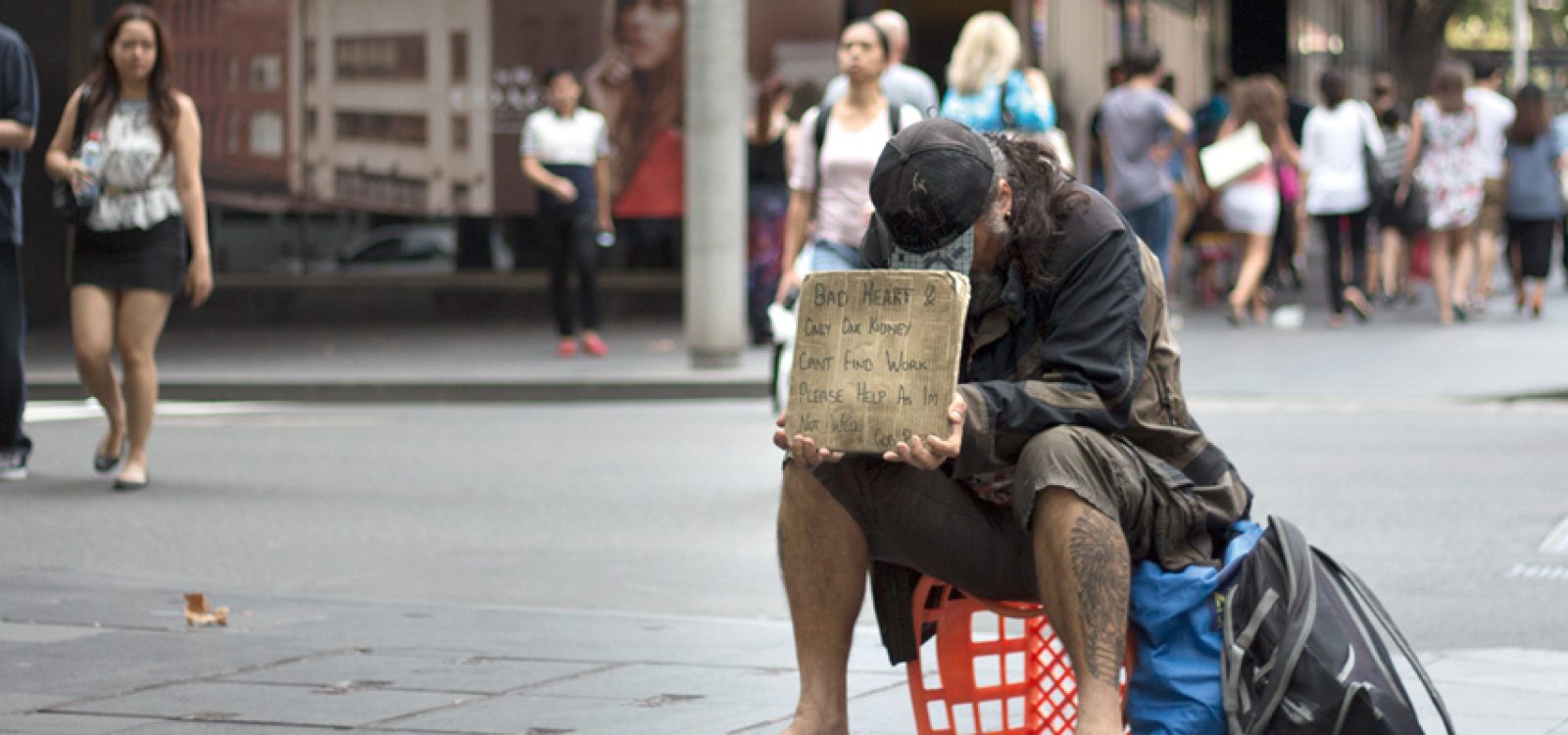
The Economics of Inequality
INTRODUCTION
Today, the combined wealth of just 67 individuals exceeds that of the poorest 3.5 billion people – half of the world’s population. Income inequality is a problem that appears to be getting worse. 70% of the world’s inhabitants live in countries where inequality is greater now than it was 30 years ago.
At the end of October Oxfam issued a new report Even it Up: Time to End Extreme Inequality1 and kicked off their Even it Up campaign to inspire the worldwide community to close the income inequality gap and deal with poverty in the process. These shocking statistics, and many others can be found in Oxfam’s report.
Earlier this year the highly acclaimed French economist, Thomas Piketty, released his book Capital in the Twenty-First Century. The book soared to the top of bestseller lists and brought income and wealth inequality into the public spotlight.
Oxfam and Piketty are not alone in their concern. The World Economic Forum continues to highlight income inequality as a major global risk. The World Bank, The Organisation for Economic Co-operation and Development (OECD), together with The International Monetary Fund (IMF) have all identified income inequality as an issue that needs attention.
NEVER HAS SO MUCH BEEN IN THE HANDS OF SO FEW
In 2011 it is estimated that 2.2 billion people lived below the poverty line, defined by UNESCO as US$2 per day and just over 1 billion2 lived below the US$1.25 per day ‘extreme poverty threshold.’ At the same time many others lived in comfort.
Earlier this year, Oxfam reported that the combined wealth of 85 individuals exceeds that of the poorest half of the world’s population. These 85 billionaires were identified based on the 2013 Forbes Billionaires list3. Their wealth totalled US$1.7 trillion, which translates to US$80 billion each. This compares to just US$486 per person for those on the unfortunate end of the wealth scale.
Since this statistic was released in January 2014 it has been estimated that those privileged few have seen their collective wealth increase by US$668 million every day, almost half a million US dollars every minute. As a result, by the time Forbes published its 2014 Billionaires List4 in early March, it took only 67 of the richest individuals’ wealth to match that of the poorer half of the world. 28 of this group are from the US; with Germany and Russia close contenders each producing 6 billionaires each.
The percentage of income received by the richest members of society is increasing.
Source: Working For the Few. Political capture and economic inequality. Oxfam
Oxfam have reported that the wealth of the 1% richest people amounts to $110 trillion, 65 times the total wealth of the bottom half of the world’s population. In the US, the wealthiest 1% captured 95% of post-financial crisis growth since 2009, while the bottom 90% became poorer.
Such figures have led to worldwide campaigning by groups such as The Occupy Movement, with the slogan ‘We are the 99%’. They aim to fight back against a system where the rich get richer and the poor get poorer.
CAPITAL IN THE TWENTY-FIRST CENTURY
Thomas Piketty’s book Capital in the Twenty-First Century, has gained widespread public and political attention. In this bestseller, Piketty aims to focus not only on the level of inequality, but also the origin and structure of inequality. The primary source of data for the book is the World Top Incomes Database (WTID), created by the joint work of about 30 researchers around the world, primarily using tax data. It contains information on the distribution of earnings and wealth of more than 20 countries5. Piketty’s detailed data gathering and statistical analysis has received the praise of many economists.
Piketty examines the dynamics of income and wealth distribution over a longer period of time than previous studies and breaks income down into two components in his work:
- Income from labour (wages, salaries, bonuses etc.)
- Income from capital (rent, dividends, interest, profits, capital gains, royalties, and other income derived from owning capital)
Piketty’s key findings are that inequality was significant at the beginning of the 20th century, but reduced between 1910 and 1950, mostly due to war and the resulting policy decisions made by governments. In the 30+ years since 1980 inequality has grown. America has returned to and surpassed the levels of income concentration experienced at the beginning of the 20th century.
There are two reasons for this increased concentration of wealth:
- Soaring in equality in wages
- The level of returns that can be achieved on wealth
The trend of increasing executive incomes is especially noticeable in America. In 1980, roughly one-third of national labour income went to the top 10% of earners. Over the next three decades their share rose by 15% and they now receive close to 50% of national income.
Piketty states that as a general rule wealth grows faster than economic growth. (He explains this concept with expression r > g, where r is the rate of return on wealth and g is the growth rate of the economy).
Piketty argues that in an economy where the rate of return on capital outstrips the rate of growth, existing inherited wealth will always grow faster than earned wealth. So wealth accumulated in the past grows faster than wages and this leads to the concentration of wealth.
Piketty’s biggest claim is that the current free-market system has a natural tendency towards increasing the concentration of wealth.
Faster economic growth reduces the importance of existing wealth in society and slower growth will increase its importance. So economic growth governs the impact of the past on the present. As growth rates fall, as has been the case for most developed economies over the latter half of the 20th century, the impact of past wealth increases.
- Piketty calculates that at growth rates of 0.2% per year the economy expands by just 6% per generation. So the concentration of wealth in society is almost unchanged;
- at 3.5% annual growth, each generation has an economy 2.8 times larger than the last, and over a century a 31-fold increase in economic output will be experienced. This results in the potential for dramatic social change and for the old to be constantly replaced with the new; and
- somewhere in the middle, at an annual growth rate of 1.5% each generation enjoys economic output about 50% greater than the previous, which over a century leads to a three-fold increase in output. Change is possible, but limited.
So, how should the current state of inequality be remedied? Piketty suggests introducing a progressive annual global tax on capital. This could take the form of an annual levy, starting at 0.1% and reaching a maximum of around 10% on the greatest fortunes. Piketty also suggests a 80% tax rate on incomes above US$500,000.
Like any work introducing such ground breaking and potentially controversial theories, Capital in the Twenty-First Century has led to much discussion. Readers have questioned whether it’s right to assume that the future will look like the past.
The main criticism for Piketty’s work is that his policy recommendations are ideological and unlikely to be possible, or welcomed, in practice. It is not hard to understand why this might be the case. Governments are unlikely to readily introduce policies that upset those who are likely to have played a significant role in getting them into power and will support them during their term in office. Those with wealth do not always readily share it. However, Piketty asserts that we are on a one-way journey towards inequality unless governments intervene.
THE LUCKY COUNTRY?
In the ‘Lucky Country’ of Australia, most people live relatively comfortably compared to so many of the world.
Australia is traditionally a very egalitarian society, favouring equality for all people. This is ingrained in the culture both subtly and more intentionally.
For example, applicants for selected Australian visas are required to sign a values statement to encourage all new residents to uphold Australian values. These values include6:
- respect for the freedom and dignity of the individual;
- equality of men and women;
- a spirit of egalitarianism that embraces mutual respect, tolerance, fair play, compassion for those in need and pursuit of the public good; and
- equality of opportunity for individuals, regardless of their race, religion or ethnic background.
But even in Australia there continues to be a significant concentration in the distribution of wealth. Oxfam reports in their publication, Still the lucky country?7, released in June 2014, that inequality is also rising in Australia. The richest 1% of Australians now own the same wealth as the poorest 60%. Australia’s richest person owns more than the lowest 10% of the population combined (2.27 million people). The nine richest individuals have a net worth of US$54.8 billion, more than 20% of the population (4.54 million people)8.
The Australian Council of Social Service released the report Poverty in Australia 2014 in October this year9. It highlights that poverty in Australia is increasing, with 2.5 million Australians (13.9% of the population) living below the internationally accepted poverty line. This line represents 50% of median income, after allowing for housing costs, therefore adjusting for the cost of living in different countries.
WHAT IS THE IMPACT?
How does income inequality impact the world? What happens when wealth is concentrated in the hands of a few?
Whilst acknowledging that some inequality is necessary to drive growth and progress, reward talent, hard-earned skills and a willingness to innovate and take entrepreneurial risk, Oxfam argues that today’s extremes of economic inequality undermines growth and progress. Further, it fails to invest in the potential of hundreds of millions of people.
They state that:
‘Extreme inequality corrupts politics and hinders economic growth. It exacerbates gender inequality, and causes a range of health and social problems. It stifles social mobility, keeping some families poor for generations, while others enjoy year after year of privilege. It fuels crime and even violent conflict. It squanders the hopes and ambitions of billions who are trapped at the bottom with no way out. These corrosive consequences affect us all, but the impact is worst for the poorest people.’ – Even it Up: Time to End Extreme Inequality, Oxfam
WHAT NEEDS TO CHANGE?
The Oxfam report challenges a number of ‘myths’ about inequality. These include the belief that:
- there is a trade-off between economic growth and reducing inequality;
- inequality is the inevitable and unfortunate impact of technological progress and globalisation, so there is little that can be done about it;
- extreme economic inequality is not the problem, extreme poverty is the problem;
- there is no need to focus on inequality and the growth in wealth for a few at the top, as long as poverty is being reduced for those at the bottom;
- sustained economic growth only comes from reducing government interventions and leaving markets to their own devices; and
- the wealthy are richer than others because they deserve it and work harder.
Although hard work does lead to prosperity in some cases, not all people begin with a level playing field. The reality is that a person’s future opportunities are influenced significantly by where they are born and the income of their parents. Deliberate political and economic choices impact equality, with both regulation and taxation having a part to play.
Income inequality is a very complex issue and not a simple one to solve, but Oxfam asserts that it is not an inevitable consequence of today’s world. While Piketty’s recommendations are perhaps more theoretical, Oxfam’s campaign is petitioning for four areas of change:
- Tax reform
- Greater investment in public services
- Decent wages
- Government policy reform
Solving global income inequality will result in substantial changes for the poor. Oxfam calculates that 1.5% of the combined wealth of all the world’s billionaires could fill the annual shortfall in funds needed to provide health services in the world’s poorest countries and pay for every child in the world to go to school. If India stops inequality from rising, it could end extreme poverty for 90 million people by 2019.
SO WHAT NEXT? – A PERSONAL VIEW
“Overcoming poverty is not a task of charity, it is an act of justice. like Slavery and apartheid, poverty is not natural. It is man-made and it can be overcome and eradicated by the actions of human beings. Sometimes it falls on a generation to be great. yoU can be that great generation. let your greatness blossom.” – Nelson Mandela
Irrespective of our view of how the world in which we live should operate, the growing chasm separating the wealthy from the poor is very concerning.
I believe our voices and actions are a necessary part in overcomi ng a global problem, particularly for those of us privileged enough to be born into a wealthy nation.
Actuaries are in a unique position to be able to understand the economic forces at work within such complex issues, crunch the numbers and extrapolate trends. We are used to seeing the bigger picture in our work, considering the impact of intergenerational inequity, and making recommendations as to how change can be achieved. Many of us hold privileged positions as trusted advisors to the government and other leaders with significant influence. The question remains, how can we as Actuaries make a difference to global income inequity with our work and will we let our greatness blossom?
1 Even it Up: Time to End Extreme Inequality. Publication date 29 October 2014.
2 World Bank – Poverty Overview
3 Oxfam used the Credit suisse (2013) ‘Global Wealth Report 2013’, Zurich: Credit Suisse, ; and Forbes’ ‘The World’s Billionaires’, (accessed on 16 December 2013).
4 Forbes’ 2014 Billionaires List
5 The World Top Incomes Database
6 Fact sheet 7 – Life in Australia: Australian Values.
7 Oxfam’s report Still the Lucky Country?
8 Oxfam used the list of billionaires from Forbes released on March 4, 2014 to calculate the accumulated wealth of the richest families in australia and data from Credit suisse global wealth databook to calculate the wealth of the bottom 10, 20 and 60 percentiles of the population.
9 The ACOSS report Poverty in Australia 2014 uses data from the Australian Bureau of Statistics Income and Expenditure surveys for 2011-12
CPD: Actuaries Institute Members can claim two CPD points for every hour of reading articles on Actuaries Digital.









